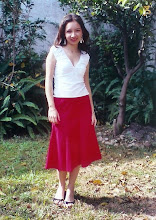Arles.
Today I day-tripped to Arles and visited its extensive Roman ruins, but enjoyed the visit to the Museon Arlaten, the local ethnographic museum, the most. I'm not sure why I like ethnographic museums so much: it is nice, to see how people used to live elsewhere, I guess. The U.S. doesn't have too many of these kinds of museums, which is too bad, since of all places its population is made up of so many different ethnic groups each with its very own interesting section of life and history in the new continent, not to mention the various native populations that still even exist to this day (come to think of it, I think I did visit a type of ethnographic/archealogical museum once, near Valley of Fire State Park in Nevada, maybe. But it was small, inaccessible, in the middle of nowhere, not too many visitors, and so modest and inconspicuous it lacked the pride most other notorious ethnographic museums--the National Anthropology Museum in Mexico City, for instance--can't exist without, and which is vital in disseminating information about the cool things that make each culture unique and interesting). Maybe, the U.S. is simply too "young" a country...
Anyway, one of the neat festivals here in the region of Provençe originated in the city of Tarascon. During the last weekend of June a type of sea-dragon made out of wood and paper called the Tarasque is paraded along the streets amidst of much music and partying. Legend has it that there was a large, fiery-breathed dragon terrorizing the inhabitants along the Rhône, until one day Ste. Marthe, a chaste young maiden, approached him and charmed by her, he miraculously turned docile and obedient (for more info check out for instance this site here). The effigy of the monster in the museum, though, looked rather cute. So I'm glad they tamed the monster (and kept it, I guess) instead of killing it. ;P
Another cool thing in this museum were some really nice drawings of Léo Lelée, who painted the Provençal people in some very simplified, but evocative lines full of movement (see for instance here or here). No surprise I liked him: he was one of the most notorious Art Nouveau exponents of his day.
By the way, it looks like yesterday was not an aberration and my French, at least the pronounciation, is getting better (I still only know only 2 verbs which I have no idea how to conjugate and a total of 50 other words at most--you should see how I make up the antonyms: "fast" becomes "not slow", or "not clear" both for opaque/unclear as the situation requires, etc. :}): at the newsstand at the train station the vendor skeptically warned me that the magazine I was about to buy was in English, not French, was I sure I wanted it?
Heh. Anway I arrived in Orange (didn't miss the train this time!) to catch it in the midst of *its* music festival, which was nice, because it meant that the old Roman Theater (Thèâtre Antique, it is called here), and the reason Orange is a UNESCO World Heritage Site, was open for visiting (and listening to the brass band that was playing popular spy-movie music themes like Mission Impossible and James Bond, etc) in spite of the relatively late hour (after closing time). Got some very nice pictures of the extraordinarily well-preserved structure (they claim it is the best preserved Roman theater in Europe), and it was also kind of neat, imagining a nice novel/mystery book story as I wandered behind the stone corridors 30 meters high off ground level with the fantastic panoramic views of the village, of someone luring the nemesis to the theater, while an elegant concert goes on below, in the darkened corridors that open to unprotected walls, where just a tiny "accidental" push down the precipice of the walls would suffice, and none would be the wiser. Hey, don't blame me (or my overactive imagination), the background music made such directions of thought inevitable. {shrug}
Accommodating 7,000 spectators, the view and acoustics from any single vantage spot of the Theater are fantastic. Unobstructed and perfect, respectively, even from the topmost and furthest from the stage seat I didn't hesistate to clamber all the way up to. What a superb feat of engineering. Visiting the ruins of other sites hardly gives you an idea, of how well these things could be designed. And maybe, the folks at Davies Hall in San Francisco could learn a thing or two from these "primitive" Roman constructions.
Tomorrow: more of Roman engineering as I visit the acqueduct at Pont du Gard.

No comments:
Post a Comment